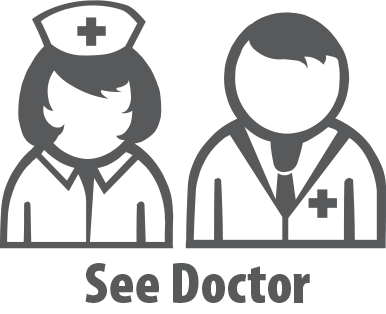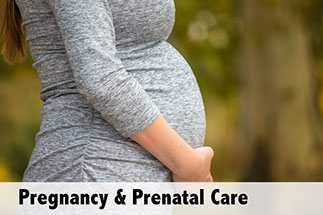Women's Health
Cervical Cancer
The cervix is the lower, narrow part of the uterus. Cancer of the cervix can occur at any age. It occurs most often in women who are over 30 years old. It is rare in women under the age of 20, but is also common in women in their 20s.
Signs & Symptoms
Screening tests, such as Pap tests, are important because signs and symptoms are not often present in the early stages of the disease.
Late Stage Symptoms
• Vaginal bleeding or spotting blood between menstrual periods.
• Vaginal bleeding after sex, douching, or a pelvic exam.
• Vaginal bleeding that is not normal for you.
• Increased vaginal discharge.
• Pain in the pelvic area.
• Pain during sex.
Causes, Risk Factors & Care
• The main risk factor is being infected with human papillomavirus (HPV). This is passed from one person to another during sex. There are many types of HPV. Certain high risk types cause most cervical cancers. Other types increase the risk for genital warts or other conditions that are not cancer. Not all women who are infected with HPV get cervical cancer and HPV is not present in all women who have cervical cancer either.
• Not having routine Pap tests. These screen for cells on the surface of the cervix that are abnormal and can turn into cancer. It can take several years for this to occur, but could happen in a short period of time, too. These changing cells can be treated so they don’t turn into cancer.
• Having a current or past sexually transmitted infection (STI), such as chlamydia. This increases the chance of getting HPV.
• Smoking.
• Being the daughter of a mother, who took a drug known as DES during her pregnancy. This drug was used from about 1940 to 1970 mostly to prevent miscarriages.
• Taking drugs or having HIV/AIDS or any other condition that lowers the immune system.
The risk increases for persons who:
• Started having sex at an early age.
• Had or have sex with multiple sex partners. The more partners, the greater the risk.
• Had or have sex with a partner who: Has HPV; began having sex at a young age; and/or has or had many sexual partners.
Prevention
Three doses of HPV vaccine can help prevent the most common types of HPV that can cause cervical cancer and genital warts. The vaccines are advised for girls ages 11 to 12 years old, but can be given from age 9 years to age 26 years. Find out more about HPV vaccine from www.cdc.gov/hpv/vaccines.html.
Treatment
If found early, the cancer can be cured in most women. To find it early, have regular cervical cancer screenings. Get tested for human papillomavirus (HPV), chlamydia, and other sexually transmitted infections (STIs), as advised by your doctor.
Treatment depends on what is found. The precancerous form of cervical cancer is called dysplasia. Mild cases of this can be monitored with more frequent Pap tests. Medical treatment can also be given. This includes laser therapy and removing part of the cervix. Surgery, radiation therapy, and/or chemotherapy treat cervical cancer.
If the cervical cancer has not spread and a woman wants to get pregnant in the future, just part of the cervix may be removed. If a woman does not want a future pregnancy, a hysterectomy may be chosen.
Questions to Ask
Question
01
Are late stage symptoms of cervical cancer present?

You should be seen by your doctor for medical advice. Contact your doctor or health care provider to find out how soon you should be seen.
x
Question
02
Are you age 21 to 65 and have you not had a Pap test for 3 or more years? Or, are you age 30 to 65 and have you not had a Pap test and HPV testing for more than 5 years?

You should be seen by your doctor for medical advice. Contact your doctor or health care provider to find out how soon you should be seen.
x
Self-Care / Prevention
• Have Pap tests and pelvic exams as often as your doctor advises.
• Use “Safer Sex” to help prevent HPV and other STIs.
• Get tested for HPV, as your doctor advises. Tell your partner(s) to get tested, too.
• Don’t douche. If you do, don’t do this more than once a month.
• Don’t smoke. If you smoke, quit!
If you have a low income, or do not have health insurance, you may be able to get a free or low-cost Pap test through the National Breast and Cervical Cancer Early Detection Program. To find out if you qualify, call 1-800-CDC-INFO (232-4636).
Resources
National Cancer Institute
800.4.CANCER (422.6237)
National Breast and Cervical Cancer Early Detection Program (NBCCEDP)
National Cervical Cancer Coalition
800.685.5531

Download an offline pdf file.
RELATED ARTICLES
<
>
2021 © American Institute for Preventive Medicine - All Rights Reserved. Disclaimer | www.HealthyLife.com








